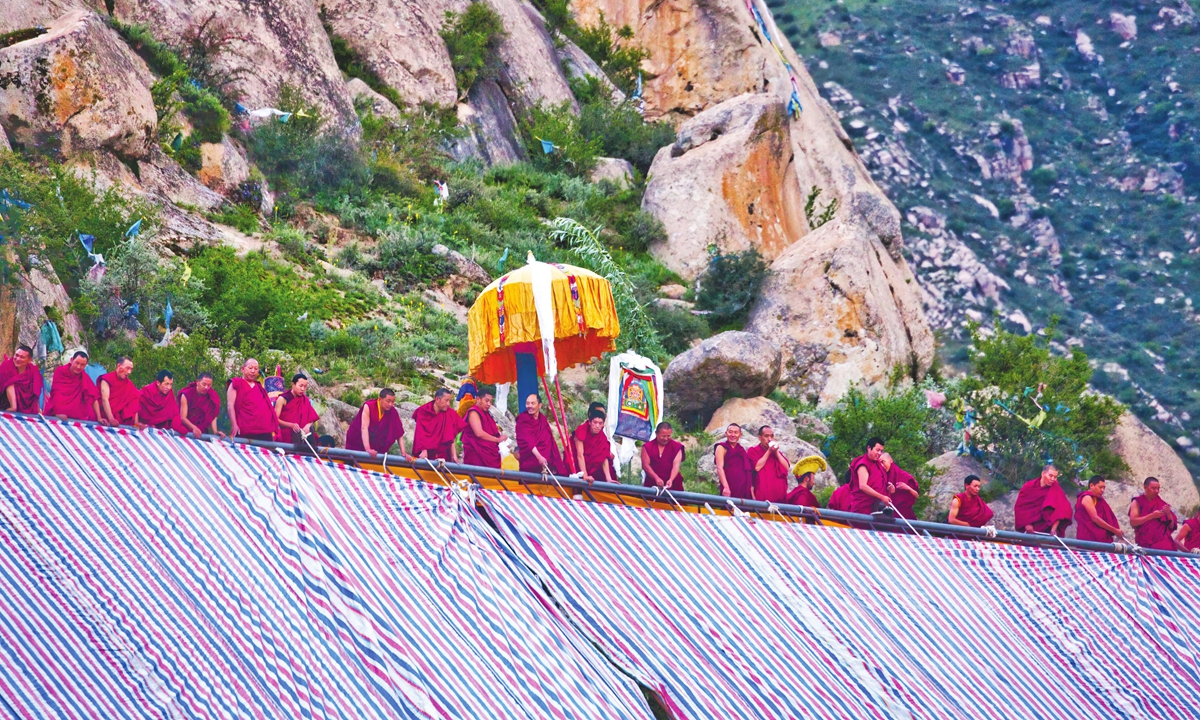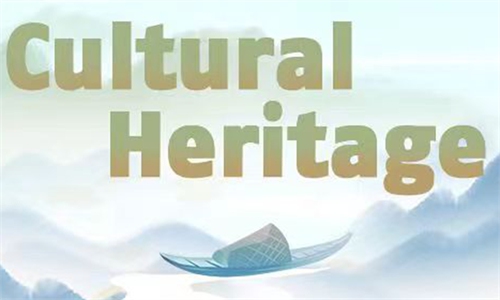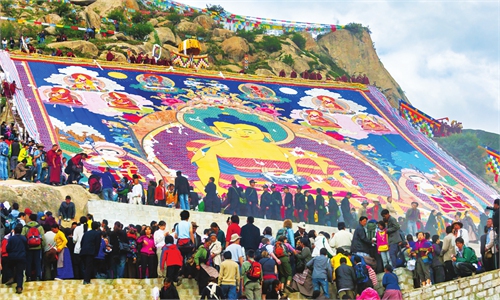ARTS / CULTURE & LEISURE
Cultural Heritage
The Shoton Festival (II): symbol of Tibetan culture
For entertainment during the Shoton Festival in Lhasa, families, friends and relatives dressed up in traditional Tibetan clothing enjoy picnicking in the western suburb Norbulingka. They set up tents, drink yogurt, yak butter tea and highland barley wine, and sing and dance to music played on Tibetan musical instruments.
The second day of the Shoton Festival brings another major festival activity - Tibetan Opera. It goes on from 11 am till the evening in Norbulingka and other sites in Lhasa and lasts for the remaining days of the festival.
Tibetan Opera is a performance art combining religious rites, folk dances, ballad singing and storytelling. Tibetan Opera can be traced back to the 13th century, and by the 17th century it had developed into the performances seen today. Actors wear different colored masks during performances. Among them, a white mask stands for the kindness, purity and warmth of elderly characters; blue masks signify the bravery and righteousness of warriors; the yellow mask represents the benevolence and profound knowledge of rinpoches (religous teachers); a green mask signifies the wisdom and beauty of the Buddhist deity Tara; and the red mask represents power and wit of kings or officials, and the black mask stands for evil and fierceness.
Tibetan Operas are based on historical records, legends and epics.
One of the most famous is the opera Princess Wencheng. In 641, Princess Wencheng of the Tang Dynasty (618-907) was married to Songtsan Gambo, king of Tubo, a kingdom in Tibet. Princess Wencheng brought in medicines, grains and vegetable seeds, books on farming and textile technologies and handicrafts to the local area, making her a respected figure in Tibetan culture, even today. The marriage of Songtsen Gampo and Princess Wencheng helped promote cultural and economic exchanges between the Tang and Tubo and the story is still told in Tibetan Opera performances, frescoes and folk songs.
In 1959, when democratic reform was conducted in the Xizang Autonomous Region, the Shoton Festival was further enriched. In addition to Tibetan Opera, singing and dancing performances and yak races, Tibetan horse riding competitions are also held as well as fireworks shows in the evening. Nowadays, painting exhibitions, fashion shows or academic forums are also held together with business negotiations, merchandise exhibitions and tourism events.
To protect this unique Tibetan cultural activity, the Shoton Festival was officially added to China's Intangible Cultural Heritage List in 2006.

For entertainment during the Shoton Festival in Lhasa, families, friends and relatives dressed up in traditional Tibetan clothing enjoy picnicking in the western suburb Norbulingka. They set up tents, drink yogurt, yak butter tea and highland barley wine, and sing and dance to music played on Tibetan musical instruments.
The second day of the Shoton Festival brings another major festival activity - Tibetan Opera. It goes on from 11 am till the evening in Norbulingka and other sites in Lhasa and lasts for the remaining days of the festival.
Tibetan Opera is a performance art combining religious rites, folk dances, ballad singing and storytelling. Tibetan Opera can be traced back to the 13th century, and by the 17th century it had developed into the performances seen today. Actors wear different colored masks during performances. Among them, a white mask stands for the kindness, purity and warmth of elderly characters; blue masks signify the bravery and righteousness of warriors; the yellow mask represents the benevolence and profound knowledge of rinpoches (religous teachers); a green mask signifies the wisdom and beauty of the Buddhist deity Tara; and the red mask represents power and wit of kings or officials, and the black mask stands for evil and fierceness.
Tibetan Operas are based on historical records, legends and epics.
One of the most famous is the opera Princess Wencheng. In 641, Princess Wencheng of the Tang Dynasty (618-907) was married to Songtsan Gambo, king of Tubo, a kingdom in Tibet. Princess Wencheng brought in medicines, grains and vegetable seeds, books on farming and textile technologies and handicrafts to the local area, making her a respected figure in Tibetan culture, even today. The marriage of Songtsen Gampo and Princess Wencheng helped promote cultural and economic exchanges between the Tang and Tubo and the story is still told in Tibetan Opera performances, frescoes and folk songs.
In 1959, when democratic reform was conducted in the Xizang Autonomous Region, the Shoton Festival was further enriched. In addition to Tibetan Opera, singing and dancing performances and yak races, Tibetan horse riding competitions are also held as well as fireworks shows in the evening. Nowadays, painting exhibitions, fashion shows or academic forums are also held together with business negotiations, merchandise exhibitions and tourism events.
To protect this unique Tibetan cultural activity, the Shoton Festival was officially added to China's Intangible Cultural Heritage List in 2006.

People celebrate the Shoton Festival in Lhasa, Xizang Autonomous Region. Photo: IC


